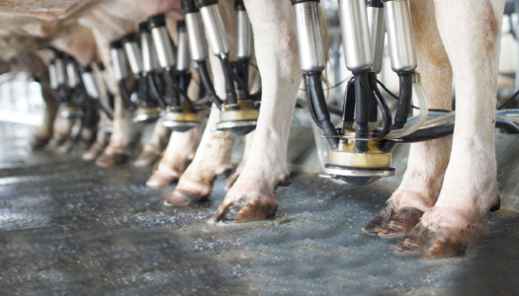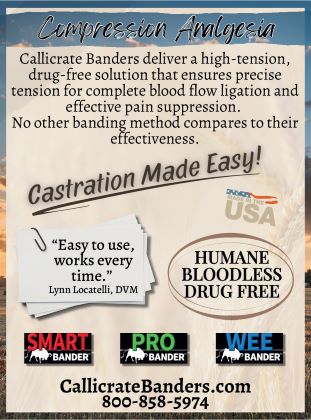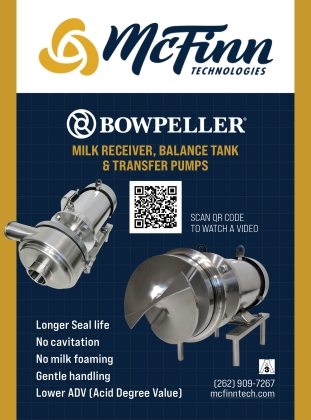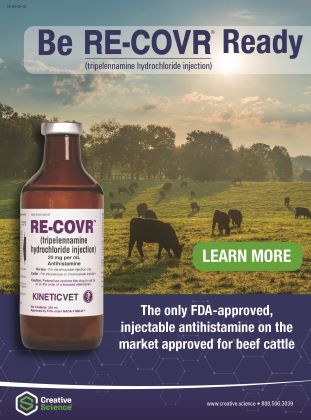Stall Mats and Cow Mattresses

Comfortable Stall Mats and Cow Mattresses
Keeping livestock healthy, safe, and comfortable is one of the top priorities on a dairy farm. Cattle mats are designed to keep barn floor and stall areas cleaner, warmer, and more comfortable for the cattle. If cows are kept in a free stall for resting and lying down, dairy cow mats provide insulation and cushioning benefits. Here are some of the top cattle mats in the industry.
LRP Matting
Kris Baucher is the Commercial Manager USA (based in Coldwater, Ohio) for the international company LRP Matting. “Since 1971, LRP Matting has been manufacturing rubber mats and flooring for use in recreational, agricultural, and industrial applications. We take great pride in offering the largest mats in the industry, simplifying the installation process, and minimizing the number of seams in any area,” she says.
Working closely with market leader, DRI Rubber (a company with over 75 years of experience in the rubber industry), gives us access to the most advanced technologies for upcycling rubber waste streams, such as FRC® compounds, in our rubber mats. Combined with a century of experience in real-world applications we are able to supply our customers with the very best, high-quality rubber matting solutions.”
LRP has a primary focus on boosting the well-being of humans and animals, while improving the environmental footprint of both their customers and the rubber industry. “LRP’s durable, long-lasting products ensure you can achieve the highest levels of protection and comfort for cattle,” says Baucher.
“By using our rubber mats you can turn your barn area into a safe, clean, and comfortable space. We have a solution for every surface and every size! Our rubber mats boast the following qualities: They are made from the highest quality rubber, with simple installation. They provide insulation for the animal and have anti-slip features which allows for a safer surface, and they are easy to clean and maintain. All of this promotes higher yield from the cows.”
Featured Products from this company include the Double Button Mat. “The Double Button Mat is a high-quality, rubber floor mat that serves multiple purposes. For the safety of your herd, the mat has a grooved underside that allows for drainage and grip for sloped areas. It also provides greater cushioning. The Double Button Mat is designed for applications with flushing systems for floor cleaning, as opposed to scraping.
“Cow Comfort” Runners are the largest mats available in the industry for permanent installation in free-stall dairy barns. Available in 48″, 60″, and 75″ widths, lengths up to 16′ to fit in any free stall barn, these runners appear virtually seamless when installed. These mats are approximately 1/2″ thick and have sure-traction grid surface.
The Slat Mat is another popular product. “The Slat Mat has been designed primarily for the beef and dairy industries and offers your animals safety, protection, insulation and comfort. Using this type of matting has several benefits, such as increased weight gain, animal movement and welfare. Our patented Slat Mat Fastener is a game changer when it comes to securing these mats. Both the Slat Mat and the Slat Mat Fastener can be purchased according to the size of the concrete slat”, she explains. All products can be reviewed online at www.lrpmatting.com.
Foxworthy
Gail and Susan started Foxworthy Supply in Kent City, Michigan 48 years ago constructing free-stall dairy barns. They eventually added animal husbandry equipment such as free-stall loops, waterers, fans, headlocks, sidewall curtain, calf huts and grain bins. Later, they sold the construction and equipment side of the business and focused entirely on cow comfort solutions.
Gail’s engineering background and experience dairy housing enabled him to create unique and animal-friendly designs, such as rubber cow mattresses for beds where cows sleep. “We tried other mats from other manufacturers, but had problems with those because the cow puts a lot of stress on the area where she gets up and down. It has to be very durable,” he says. There is a lot of hoof action, especially as she gets up.
“We ended up designing our own mat. In 2014 we had our molds made and started producing the mats.” These mats use is in conjunction with sand as bedding, since many dairies utilize clean sand as the main bedding material.
“What separates us from the rest of the competition is our design and durability. The design is very user-friendly in terms of installation. There are no zip-ties or tools required. For some mats, people have to bury lumber down in the beds so they can fasten their mats to the lumber. We simply screed the sand to the level we want, which is 3.5 inches below the top of the curb. We lay the mat on the sand and it is interlocking all the way around,” says Foxworthy.
There are some large dairies using these cow mattresses. “We have a ‘poster child’ dairy in Wisconsin and one here in Michigan that are the type of dairymen that other people watch to see how they do things.” They are innovative and progressive and do everything right, for their cows.
“These two dairies are saying basically the same thing about our mats. They aid sustainability for a dairy; our Bedding $aver® Mat reduces up to 50% of the bedding material purchased and/or processed, plus all the labor, fuel, transportation, equipment, and time required to bring in the material and dispose of it. Less sand in a lagoon or separator equals savings. Whether you have sand trucked in, or dry your own compost, the Bedding $aver® saves money,” he says.
Reduction of sand in the manure equates to savings through lowered volumes of waste processed, reduced sand build-up in lagoons, less wear and tear on equipment, and ultimately less sand spread in the field. “A guy in eastern Ohio recently bought some of our mats. He was dreading what it would cost to have a custom applicator come in with a huge excavator with extended arms to dig out his lagoon. He is delighted that his sand usage will now be cut in half. And the less trips in the field, the better. These mats help reduce the cost of dairying (costs keep going up, and prices for milk are less than what it costs to produce it) and benefit the cow, which is our end goal,” says Foxworthy.
“World Dairy Expo people have been out there once already to showcase his new calf barn, and he wants to get them back again to look at his mats,” says Foxworthy.
“When I first met him last March, he and his wife told me they were not interested in our mats. He said, ‘We have the top dairy in the county and we don’t want to do anything to disrupt our cell count and don’t want any mastitis issues.’ I told him I understand; if it’s not broke, don’t fix it. Then about a week later he called and said he buys a lot of reject fracking sand in Wisconsin, and the price had gone through the roof. So, he decided to try my mats,” says Foxworthy.
“He started by trying them with the dry cows. He called back in July and told me it had been the best investment he’d made in a long time and wanted to start putting them in for his lactating cows.”
The goal with these mats is to keep cows from digging their beds out. “They like to paw, especially in summer heat when there are flies. They try to throw sand up over their back, and also try to get down to sand that might be a bit moist and cooler. But once they dig a hole, it’s harder for them to get up, especially the older cows.” They get worried and stressed when the crew comes to get them up for milking and maybe don’t give them time to get up in a relaxed manner at their own speed.
The cow may have moved too far forward in the bed because of the holes she’s dug, and this creates a double problem. She may bump the front of the stall as she tries to scramble up. She also starts depositing manure and urine in the bed itself, and leaking milk ahead of the curb and therefore lying in “sewer sand” which can lead to mastitis. You don’t want her teats coming into contact with that contamination.
The Bedding $aver® Mat allows the cow to easily enter and exit the stall by maintaining proper bedding depth and slope. The result is a consistent and comfortable bedding area that stays level and dry. This not only improves the cow’s lying position, but also supports overall hoof health.
The mats are permeable with big holes so moisture drains through. “The holes are 2.5 inches in diameter on top, tapering down to 2 inch on the bottle, with smooth beveled walls so nothing will cut teats, knees or hocks. The mats are very heavy; they are two feet by five feet and weigh 75 pounds each. After they interlock you have about 150 to 160 pounds of mat in that stall. Once set in place, they don’t move. You put them in and forget them. They work like field tile 24/7,” he says.
The manufacture and use of the Bedding $aver® utilizes large volumes of non-degradable post-production rubber material that would normally go into landfills or be incinerated. Constructively using a recycled product is an innovative conservation of soil and energy. “We call our product the Planet Saver. As time goes by, this is important; the environmental folks are looking hard at dairies. We buy old rubber and mix it with pure virgin rubber and make these mats from blended material. They not only recycle the old rubber, but reduce the amount of sand being dug out of the earth, by half, extending the life of the gravel pits.”
For more information, please call Gail Foxworthy at 616-292-3755.
Advanced Comfort Technology – Waterbeds For Cows
Scott Hartwell, CEO of Advanced Comfort Technology in Sun Prairie, Wisconsin, says the company history goes back to 1999. “My wife and I own the business now, but in 1999 my father-in-law started it after he was hired to introduce a cow waterbed to the U.S. market. At that time the product was manufactured and distributed in Europe. He sold the first cow waterbeds in North America,” says Hartwell.
The design was a single chamber of water, like the early waterbeds for people. These beds had a lot of motion and waves; if two people slept on it, whoever was heaviest went to the bottom and the lighter person was nearer the top.
“Imagine that same single bladder of water for a cow; when she would go to her knees—either lying down or getting up—her knees would push to the bottom. These beds installation was over concrete, so that meant all the water would displace from wherever the majority of her weight was. When her weight was more forward, all the water would go to the back, leaving just rubber over concrete where her knees were. Likewise, when she dropped her rear end, all that water would move to the front, leaving her with just rubber over concrete,” he says.
“A single bladder of water could not properly function for a cow. If you think about the evolution of waterbeds for people, the next improvement was the wave-less waterbed, created by installing baffles. So my father-in-law put in a baffle for the cow waterbed, about one-third of the way back. This restricted movement of water, leaving some in place in the front, to be more helpful for the cow,” says Hartwell.
“He patented his invention of the dual chamber waterbed in 2003. Wet smooth rubber is slippery, with no traction, so he added a surface texture to aid in traction for the cow. He built a good reputation for cow waterbeds throughout North America.” He then started selling these in Europe.
“Our company continued to grow and my in-laws realized improvement on the baffle design was possible if they completely separated the water that the cow needed to rely upon for her knees, from the water she needed for the rest of her body and hind legs. My father-in-law received another patent in 2013 to isolate the chambers of water, and we called this our ISO Waterbed. We sell it to countries all around the world. It is the best waterbed design for a cow because she reliably has the comfort, support and cushion of water where she needs it,” says Hartwell.
There was shifting consumer demand. “We decided to offer a dual-chamber waterbed that could be installed over a foam base, which is the only one of its kind. We also introduced a foam mattress with rubber cover. All our rubber comes from a long-term supplier we work with, and it has superior quality,” he says.
“When farmers make a decision on bedding, they want it to last. We pride ourselves on offering them the highest-quality products in the marketplace. We want our confidence to become their confidence,” Hartwell says.
The products currently offered include isolated-chamber waterbeds in a variety of sizes from calf age up to milking age—beds that can be used for dry cows, special needs cows, etc. “We also have our dual-chamber waterbed over foam that we offer in a wide array of sizes. Similarly our mattress product covers the full range as well,” he says.
“We believe that we have a product for every cow, every farmer, everywhere. We recognize that preferences vary, and individual needs of cows vary, but we can be a one-stop shop for whatever the cow comfort needs are in the stall.”
Beds and cow comfort in the stall are the main focus. “We have some in stock to sell to farms, but to do it better would take time—to develop the right product with the right quality, performance and longevity. When we think about flooring we think about areas in the barn where cows do prolonged standing. Depending on the feed lane configuration, flooring in the feed lane can be beneficial if they are standing there for extended periods,” says Hartwell.
“This might be an entire alleyway with rubber or strips, which are of use in some parts of the country, especially in the West where flushing manure lanes is common practice. Rubber in those lanes is beneficial. In the holding pens where cows are waiting to come into the milking parlor, having rubber on the floor 20 feet out from the parlor is a good practice. It is more comfortable than the concrete the cows are otherwise standing on.”
Rubber on the floor near the parlor helps keep cows wanting to move forward and this is beneficial. “Similarly, in the milking parlor when cows are milking, rubber flooring keeps them more comfortable. It also helps in the area where they are returning back to the barn from the parlor; any of the heavy traffic areas when cows are moving or standing for long periods can benefit from rubber flooring.”
The discussion around barn and stall design should focus on what’s good for the cow, and what best benefits the overall business of the dairy. “Cow comfort and farmer comfort need to be part of the same conversation,” he says.
“Our focus and company history has been cow comfort; we have been industry leaders with a global basis on cow waterbeds. We’ve partnered with our dealers and their farm customers and we’ve listened and learned together, to improve performance. We are all trying to serve the cow and what’s best for her, because she reciprocates all the way up the supply chain.”
Enhancing Dairy Flooring Safety with Concrete Grooving
In the world of dairy farming, safety is paramount. Keeping both cattle and workers safe is not only a moral imperative but also a practical one. One critical aspect of ensuring safety on a dairy farm is the flooring. Concrete flooring is a common choice due to its durability and ease of maintenance, but it can pose a risk of slipping and injury to cattle. Cole Sanders, representative for Dick Meyer Co. (DM Co.), explains how DM Co. has helped thousands of customers by implementing concrete grooving.
Concrete Grooving: How It Works
Concrete grooving is a technique that involves cutting precise 90-degree angles into concrete surfaces using diamond-tipped concrete blades. “These cuts create a right-angle edge, forming a pattern known as diamond grooving. These grooves are typically at 4-inch intervals, ensuring that the cattle’s hooves are always in contact with a groove. This innovative approach offers several advantages,” Cole explains.Cole goes on to explain one of the primary benefits of concrete grooving is its ability to reduce lameness in cattle. The improved traction provided by the grooves reduces the risk of injuries related to slipping and falling. Cattle that can move about safely are not only healthier but also more productive.
Enhanced traction ensures general safety to both people and animals.Additionally, proper drainage is essential in cattle housing areas to prevent the pooling of liquids. The grooves created by concrete grooving facilitate the natural cleaning of the floor. Unlike some other flooring options that can become clogged with bedding materials, concrete grooving remains largely unaffected. This helps maintain a cleaner and more sanitary living space for the cattle.
Concrete grooving is a valuable technique for enhancing the safety and well-being of cattle on dairy farms. For dairy farmers, prioritizing safety and animal welfare is not just a moral obligation but also a practical investment. Implementing concrete grooving is a proactive step towards achieving these goals, ultimately leading to healthier and more productive livestock.
By Heather Smith Thomas.
November 2023
If you would to read another article, here is one around winter goat care
F0r Cattle Industry News:
If you are an Outdoor Enthusiast, The Iowa Sportsman is the place for you.



